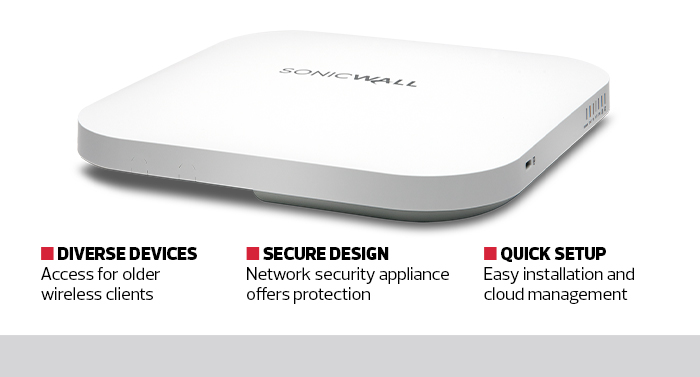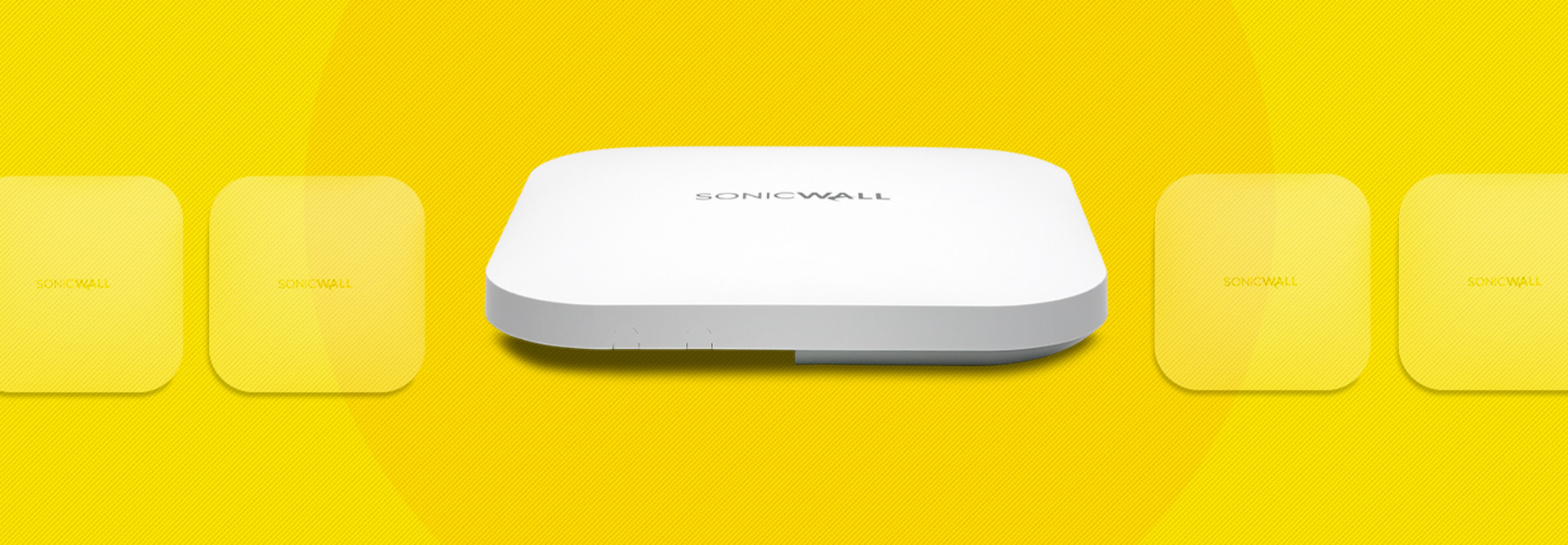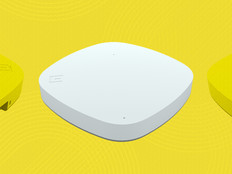SonicWave 641 Setup Is Simple
Hidden inside the unassuming device, which looks like a small smoke detector, sit dual radios and multiple antennas that can serve fast wireless signals to older devices using the 2.4 gigahertz band and newer ones with the 5GHz spectrum.
Device setup is a breeze. It’s designed to be easily mounted on a wall or ceiling or can simply be placed on a shelf. It supports Power over Ethernet, so it doesn’t even require a power cord, just a PoE-compatible network cable to complete the setup.
Once the device is physically placed, setup is completed through the cloud, so universities can have their nontechnical maintenance staffers position the APs while IT teams configure everything remotely.
SonicWave 641 Quickly Connects Multiple Devices
I tested the performance of the SonicWave 641 in my Wi-Fi 6 testing lab, which consists of a broad mix of both older and new wireless-capable devices. First, I looked at the performance of 20 devices connected to an older Wi-Fi 5 AP.
Not surprisingly, I experienced all of the typical slowdowns and disconnects when trying to transfer multiple large files or when supporting bandwidth-intensive activities such as streaming video. Some devices even had trouble joining the network when the others were maxing out its capabilities.

After switching to the SonicWave 641 AP, all 20 devices quickly connected. Older ones used the 2.4GHz band, while newer ones connected using a 5GHz signal. Once every device was logged in, the automatic management functions of the SonicWave 641 constantly optimized the bandwidth for each of the devices it was serving.
If the network did start to get a bit overloaded, easy-to-configure rules allowed priority applications, users and groups to experience less slowdown or no disruption at all. All told, the SonicWave Wi-Fi 6 AP was at least three times more efficient than APs that only had Wi-Fi 5 technology.
As a nice additional perk for schools, the SonicWave 641 AP is also highly secure. It supports all of the most advanced encryption protocols, and you can even connect its PoE cable to a SonicWave smart switch or network security appliance for even more ironclad security across the entire network of SonicWave APs.
Specifications
DEVICE TYPE: 802.11ax wireless access point
RADIOS: Dual-band 5GHz and 2.4GHz radios
SECURITY: Supports both WPA2 and WPA3 encryption
DIMENSIONS: 1.5x7.9x7.9 inches
WEIGHT: 30 ounces












